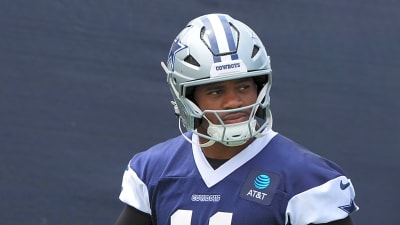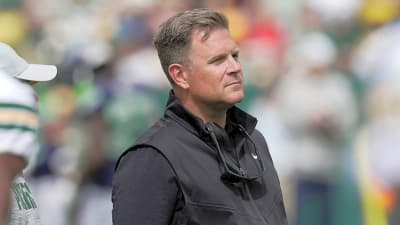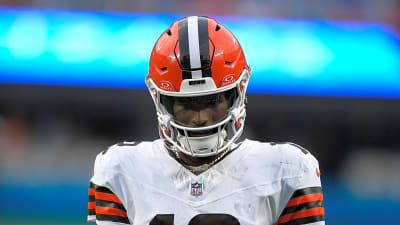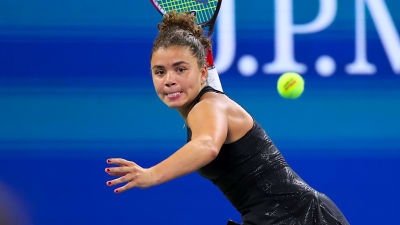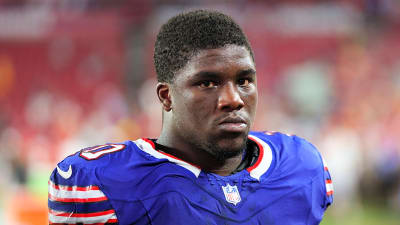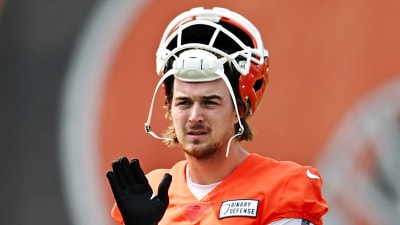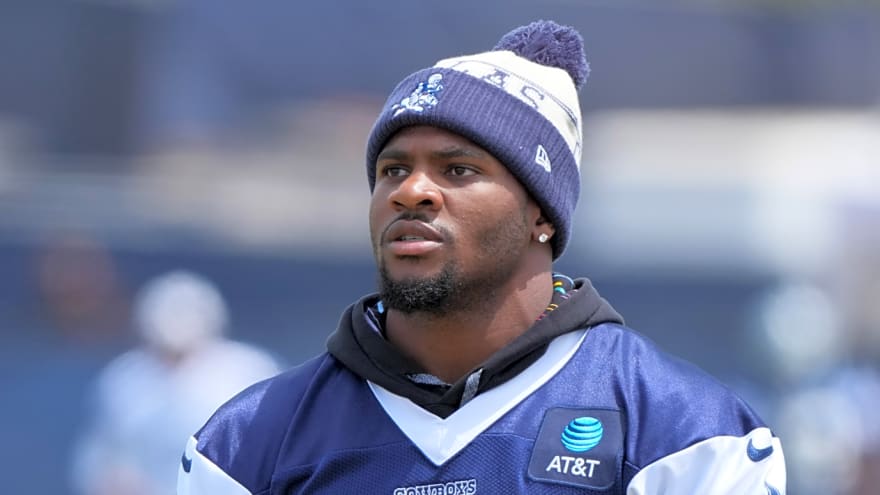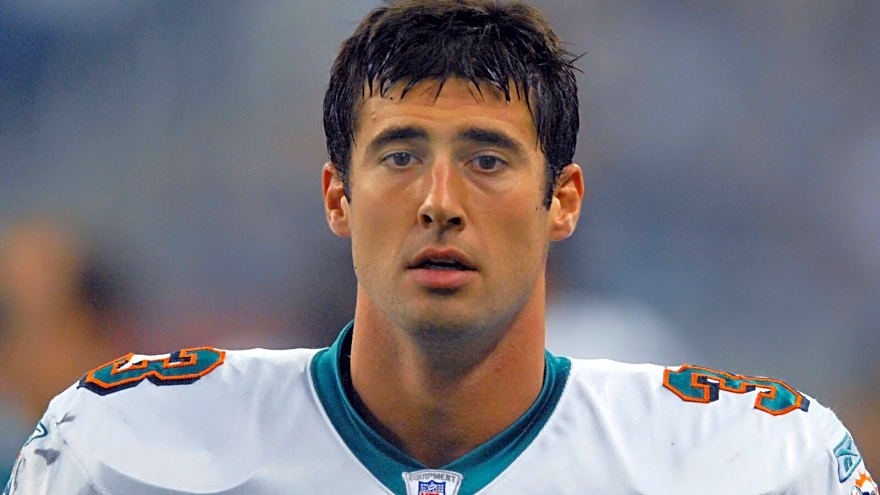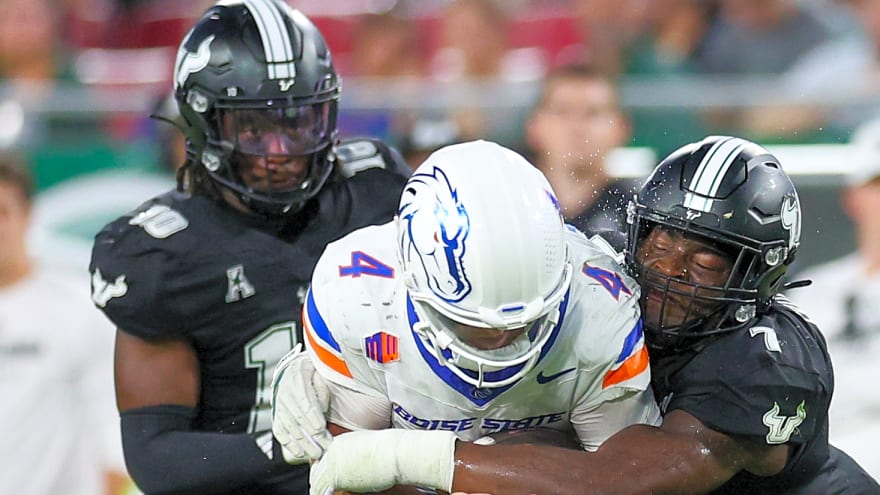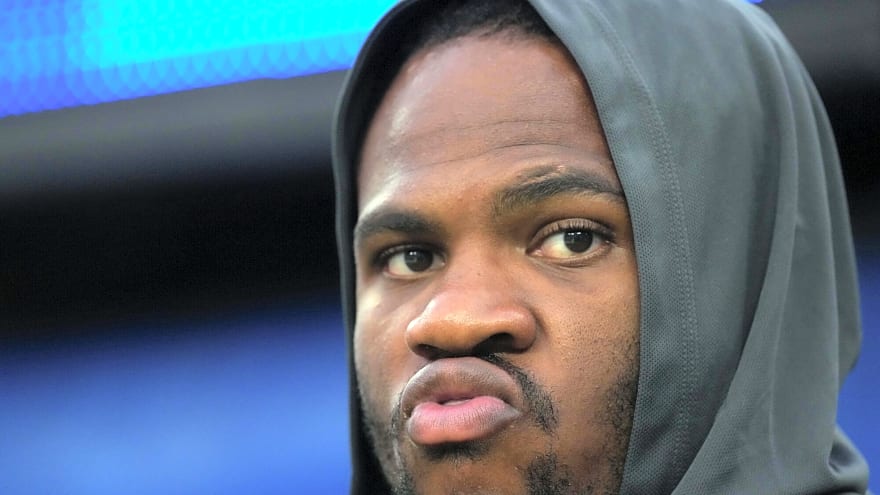
Head coaches are constantly judged for their line combinations and defense pairs, but what goes hand-in-hand is how they match those lines against opponents. Good five-on-five line matchups can optimize a line’s capabilities, while poor matchups can hinder player performance. Lindy Ruff is still learning how best to maximize his team’s attributes, but recent adjustments are key in the Buffalo Sabres turning things around this season.
If you’re unfamiliar with how line matchups work in the NHL, the home team is designated “last change”. This means that the away team must send out their players for an upcoming faceoff first. The home team’s coaching staff can then analyze who is on the ice for the away team and send out who they want to match up against those players.
Generally, line matchups are part of the game plan going into a game. Opposing teams’ lines are reported daily from practices and previous games. Scouting what the opponents’ line combinations bring is fairly common.
Sabres Forward Lines
Ruff and the Sabres’ coaching staff are showing not only an understanding of their own players but also quality scouting of how they can exploit an opponent. The intricacy of how they are using their forwards is interesting and one of the reasons for their recent success.
The red-hot emergence of Tage Thompson, along with wingers JJ Peterka and Alex Tuch, is not random. Yes, Thompson is playing at an elite level. Peterka and Tuch are also very good players. The x-factor is Ruff’s ability to put them in situations they can dominate.
Over the last two games, Thompson has three goals and five points. Four points have come at even strength, as the top line has exploited plus-matchups.
Thompson, Peterka, Tuch
Thompson’s line was deployed against J.T. Compher, Patrick Kane, and Vladimir Tarasenko against the Detroit Red Wings. Compher is known as a defensively responsible, two-way forward, but Kane and Tarasenko are all about offense.
Ruff made the bet that his Thompson line would be more puck-dominant and that Kane and Tarasenko would struggle to play on the defensive side of the ice. He was correct, as Kane and Tarasenko didn’t even record a single shot on goal the entire game.
Red Wings head coach Derek Lalonde only made one adjustment to counter the dominance, by replacing Tarasenko with the more versatile Joe Veleno. Ultimately, the move wasn’t enough.
Ruff used the same strategy against the Dallas Stars, figuring that Peter DeBoer would be comfortable deploying Jamie Benn’s line against Buffalo’s best. Benn, Wyatt Johnston, and Evgenii Dadonov have been a go-to shutdown line in the past for the Stars.
There was one problem – the statistics showed that Benn was getting crushed in those matchups this season. He had around a 35% expected goals-for percentage heading into the game, signifying a major disparity in shot quality for and against when he was on the ice. Predictably, Thompson won that matchup as well.
Even as the away team in Chicago, Ruff short-shifted Thompson, Peterka, and Tuch when he could. This got them away from the Blackhawks’ best defensive forward, Jason Dickinson. The Sabres will win most matchups against their top line with the way Thompson is playing, but taking advantage of mismatches will amplify the success.
McLeod, Greenway, Zucker
Much like how Ruff is deploying Thompson and company against poor defensive lines, Ryan McLeod’s line is facing opponents’ top offensive lines. Tasked with shutting down opponents, McLeod, Jordan Greenway, and Jason Zucker are net-positive in goals when on the ice. Some of this is the surprising early-season offensive touch from Greenway, but regardless of how they are doing it, they’re winning in difficult situations.
McLeod and his wingers start in the defensive zone twice as much as in the offensive zone. This makes it difficult to neutralize the opponent, break out the puck, transition into the offensive zone, and create scoring chances. That’s a lot of energy exerted as opposed to winning an offensive zone faceoff and creating quality opportunities.
The awareness of Greenway and Zucker complements the speed of McLeod well. The surface statistics, such as plus-minus, may take a hit as the season progresses based on the difficult deployment. The advanced stats, however, will adjust for the quality of competition over a larger sample and help define just how good of a job Buffalo’s third line is doing.
Cozens, Quinn, Kulich
Dylan Cozens and Jack Quinn have had a rotation of wingers alongside them as they try to find their game. Zucker, Jiri Kulich, and Zach Benson have all had an opportunity on the Sabres’ second line, which is getting the coziest of matchups.
Kulich leads the Sabres with 50% of his faceoffs occurring in the offensive zone. Only Peterka is ahead of Cozens and Quinn behind him, as the entire line is above 44%.
Against Detroit, that meant facing Andrew Copp, Michael Rasmussen, and Christian Fischer. The trio is the Red Wings’ defacto shutdown line that won’t provide much offense. The Sabres tried to get Cozens out against Dallas’ fourth line as much as possible to avoid a difficult matchup against Matt Duchene, Tyler Seguin, and Mason Marchment. This meant that they faced the lighter push from Mavrik Bourque, Sam Steel, and Colin Blackwell.
Given that Cozens was essentially in McLeod’s role as the shutdown center under Don Granato last season, he should be excelling in an easier role. Lower responsibility also means less important ice time, but once Cozens and Quinn return to their previous form, they’re poised for flashes of brilliance.
Krebs, Malenstyn, Lafferty
Think of Buffalo’s fourth line as a safety net. Ruff can mix and match them in any situation for the Sabres, as they’re physical, defensively responsible, and fast. Speedy forechecker Nicolas Aube-Kubel returning from injury can only add to this, regardless of who moves in and out or up and down the lineup.
Ruff primarily used Peyton Krebs, Beck Malenstyn, and Sam Lafferty against Duchene’s line against the Stars. He rotated the trio to face lines two, three, and four at different points throughout the game against the Red Wings.
The versatility and confidence the coaching staff has in the fourth line is refreshing. It gives Buffalo options, especially at home, in playing the matchup game.
Sabres Defense
The matchups and correlation of the defense pairs are a little more concerning, although the strategy and theory behind it make sense. Ruff has used the same six defensemen in every game, with Dennis Gilbert getting into one game as the Sabres extra defenseman.
Dahlin and Jokiharju
Rasmus Dahlin is Buffalo’s best defenseman, and the early season results support the case. According to our Sabres Grades, he is the highest-graded Sabres defenseman on a per-game basis. Henri Jokiharju is second in the ranks, proving that the high correlation with the Thompson line is paying dividends.
Associating Dahlin and Jokiharju with Thompson, Peterka, and Tuch gives the forwards steady defensive zone play and the ability to push play up-ice. Dahlin’s stretch passes and quality first-pass decisions aid the group in transition, which is a big part of Thompson, Peterka, and Tuch’s game.
Power and Byram
Owen Power and Bowen Byram are drawing some of the most difficult matchups, so, if you’re quick to criticize Buffalo’s second pair, keep that in mind. They still have a positive goal differential at even strength, but there undoubtedly have been some struggles.
There may come a time when Dahlin starts to draw more minutes against top opponents, perhaps on a pair with Power. There is nothing in the data to suggest that any of the top four defensemen are best suited for the role, however, so the decision is more on the coaching staff and who they think can improve their defensive play.
From the NJHN Archives: Ruff Takes Responsibility for Devils Poor Play
Samuelsson and Clifton
As far as third pairs in the NHL go, the Sabres have formed a pretty formidable one in Mattias Samuelsson and Connor Clifton. There is a lot of ice time with McLeod’s line, especially in defensive zone faceoff situations.
While the turnovers and decision-making aren’t always the best, Samuelsson and Clifton have actually been driving some of Buffalo’s best offensive play. The relative-to-teammate stats suggest the pair is taking advantage of less difficult matchups and pushing play into the offensive zone.
It’s not always going to be the most flashy, but it’s working. Should Ruff choose to switch things up and break up the top four, the Sabres would probably be able to field a well-balanced three pairs on the backend without much of a hindrance.
Lindy Ruff’s Coaching Impact on the Sabres
Over a nine-game sample, we have a little insight into what Ruff brings to the Sabres as the head coach. There’s a calmness about the state of the group and he has shown no inkling of overreacting early on. The Sabres have worked their way back to .500 while the rest of their division is shuffling in the other direction.
It’s Ruff’s experience in in-game situations and building out his lineup to support them that has helped the Sabres climb back into relevance after a disastrous start to the season. He understands that, eventually, players like Cozens and Quinn will have to step up when Thompson’s hot streak fades. Byram will have to round out his game and correct the poor underlying metrics. The goaltending can’t always bail the defense out, and Buffalo can’t always outscore their issues.
As the season progresses though, putting the Sabres in the right position to succeed at five-on-five is part of the long-term recipe for success.
More must-reads:
- Blue Jackets' extension talks with young star will have major impact on salary
- Jerry Jones again proves he shouldn't be making decisions for Cowboys
- The 'Most 1,000-rushing yard NFL seasons' quiz
Breaking News
Trending News
Customize Your Newsletter
 +
+
Get the latest news and rumors, customized to your favorite sports and teams. Emailed daily. Always free!
TODAY'S BEST
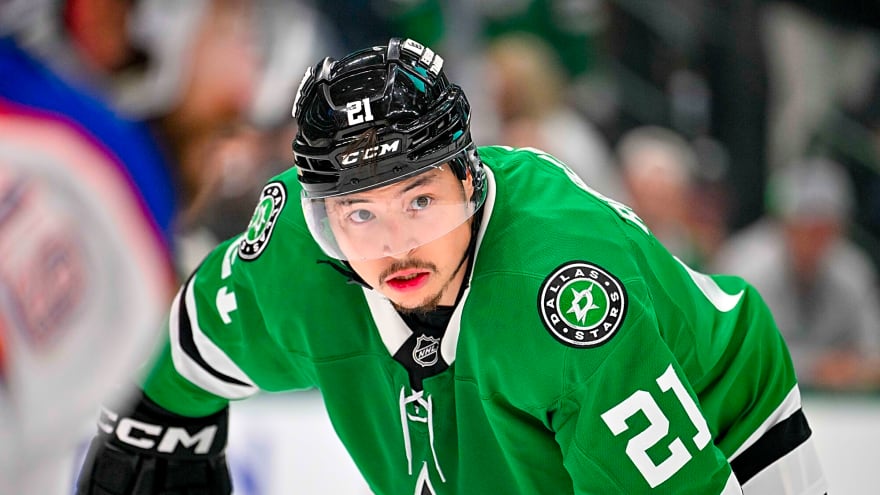
Fans are furious over this proposed Jason Robertson trade to the Toronto Maple Leafs
Some NHL trade rumours make you think, and others feel like pure fantasy. A recent proposal linking the Dallas Stars and Toronto Maple Leafs falls firmly into the second category, sparking debate over the future of Jason Robertson. The Dallas Stars are fresh off another deep playoff run and remain loaded with talent heading into 2025-26. Their top line of Jason Robertson, Roope Hintz, and Mikko Rantanen is arguably the best in hockey, a group carefully built through patience, planning, and smart cap management. So when a recent article from Heavy.com floated the idea of Dallas trading Robertson to the Toronto Maple Leafs in a one-for-one swap for veteran defenseman Morgan Rielly, eyebrows shot up across the hockey world. No prospects. No picks. Just Robertson for Rielly. The Dallas Stars trading Jason Robertson for Morgan Rielly would be a massive mistake Robertson isn't just another forward. He's a franchise cornerstone, a 40-goal scorer, and a player with multiple 80-point seasons already on his résumé. His full stats are available at NHL.com. He's also only 26 and entering his prime years. Rielly, meanwhile, is 31, carries a no-move clause, and while steady, does not address a pressing need in Dallas. With Miro Heiskanen, Thomas Harley, and Lian Bichsel leading the way, the Stars already have a strong defensive core with youth and upside. Even Sportsnet's Nick Kypreos recently cautioned about the complexity of Robertson's next deal, but nothing about that analysis justifies moving him for an aging defenseman. "The Stars need to be careful with how they handle Robertson," Kypreos noted. Careful, however, does not mean giving him away. I think Dallas would be foolish to even entertain this type of move. Robertson isn't just a player, he's part of the identity of the Stars and a key piece of their Stanley Cup hopes. This isn't NHL 26, this is real life, and stars like Robertson simply don't come around often.
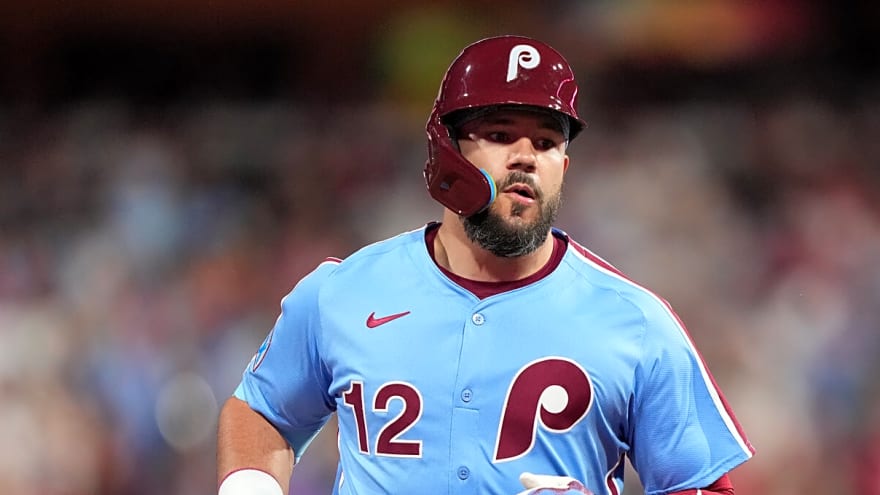
Phillies' Kyle Schwarber makes all kinds of MLB history vs. Braves
Kyle Schwarber made sure his Philadelphia Phillies bounced back after being swept by the New York Mets earlier this week. Schwarber went 4-for-6 with four home runs and nine RBI in Philadelphia's 19-4 win over the Atlanta Braves on Thursday. His first home run of the night came in the first inning, a solo shot for his 46th of the season. In the fourth inning, the three-time All-Star blasted his second home run of the night (47), this time a two-run knock. Schwarber’s third long ball came in the following frame, with his 48th being a three-run homer. Finally, in the seventh inning, Schwarber hit his fourth home run (49) of the night to right field to come within one dinger of 50 for the season. The 32-year-old made all kinds of history on Thursday against the Phillies’ division rival. He already surpassed his previous career high for home runs in a single season, but also became just the fourth player in franchise history to have four homers in a game and the first since Hall of Famer Mike Schmidt did so in 1976. Additionally, Schwarber is only the 21st player in MLB history to achieve this feat, and the fifth player all-time with at least four homers and nine RBI in a game. Plus, Schwarber joined the Athletics’ Nick Kurtz and Seattle Mariners’ Eugenio Suarez as the only players to have a four-homer game this season — the first time this has occurred. Clearly, Schwarber and the Phillies were anxious to get out of Queens and return to Philadelphia. The Phillies’ offense scored just eight runs across the three-game set against the Mets. They scored 19 runs off the Braves’ pitching at Citizens Bank Park. Schwarber received “MVP” chants from Phillies fans on Thursday, and rightfully so. He’s on his way to breaking Ryan Howard’s previous franchise record of 58 home runs in a season, which earned him the 2006 National League MVP.
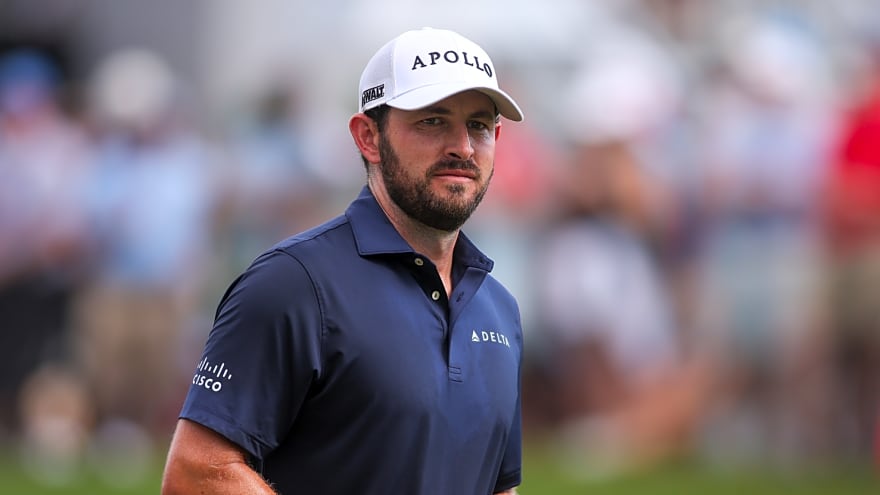
Ranking U.S. Ryder Cup pairings by how much you would hate to play with them
If you're an avid golfer, you know the anxiety-inducing feeling of showing up to your local muni as a twosome on a busy Sunday afternoon. The twosome you get paired with can make or break your entire weekend. Since captain Keegan Bradley finalized the U.S. Ryder Cup roster on Wednesday, let's have some fun by ranking the three worst duos you would hate to be paired with on the golf course. 3. Cameron Young and Harris English Getting paired with Young and English would be a bore fest from the first tee to the 18th green. The introductory handshakes and the occasional "nice shot" would be the only interactions you get from them all day. You'll spend the entire round debating whether they're 25 or 45. At some point, you'll ask your buddy if they're even friends. Sure, it would be a treat to watch Young bomb majestic high draws 350 yards and English drain multiple 30-footers with ease, but that's where the fun would stop. The over/under for the number of smiles cracked between the two of them might be set at 2.5. 2. Collin Morikawa and Sam Burns Morikawa just doesn't seem like a good hang this year. From multiple quarrels with the media to a handful of caddie switches in the span of a few months, Morikawa has been too high-strung and paranoid in 2025. He'd be quick to blame you for a poor drive because you blinked too aggressively in his backswing. No thank you. Burns is on the other end of the spectrum in that he'll keep to himself and pretend not to know Morikawa very well. He'll throw out a "Sorry about him, he's having a tough year" to ease the tension, but his personality isn't bubbly enough to offset Morikawa's bad vibes. 1. Patrick Cantlay and Xander Schauffele Cantlay would be the absolute worst-case scenario as a random pairing. You'd think his minute-long pitter-patter over the ball on the first tee was a one-time exercise to ease his nerves, but you quickly realize it's a steady feature of his pre-shot routine. Even though he's hitting the fewest shots, he's taking the longest time to hit them. The groups behind you start to pile up. At one point, the impatient union worker behind you hits into your group to send a message. Cantlay doesn't care. Five hours later, you finally finish up on 18. The group that was in front of you all day is already on their second beverage at the clubhouse bar. In an age when pace of play is just as important as your final score, Cantlay would be a nightmare pairing.

Taylor Townsend reveals how Jelena Ostapenko insulted her during post-match argument
Taylor Townsend claimed Jelena Ostapenko made insulting comments about her background and education after their heated U.S. Open match on Wednesday. Townsend beat Ostapenko 7-5, 6-1 during their second round match Wednesday, but the two players got into an argument during the traditional post-match congratulatory handshakes. Townsend and Ostapenko continued the argument at Ostapenko’s player bench before Townsend ultimately broke off to celebrate. Townsend was asked during her post-match interview what was said between her and Ostapenko. The American claimed Ostapenko had personally insulted her. “It’s competition. People get upset when they lose. Some people say bad things,” Townsend said. “She told me I have no class, I have no education, and to see what happens when we get outside the US. I’m looking forward to it. I beat her in Canada outside the U.S. … let’s see what else she has to say.” Townsend was certainly insulted by what Ostapenko told her. She even had the American crowd jeer Ostapenko as the Latvian left the court. Ostapenko has clashed with other players before, but most would agree that if Townsend correctly represented what she said, that undoubtedly crossed a line.

